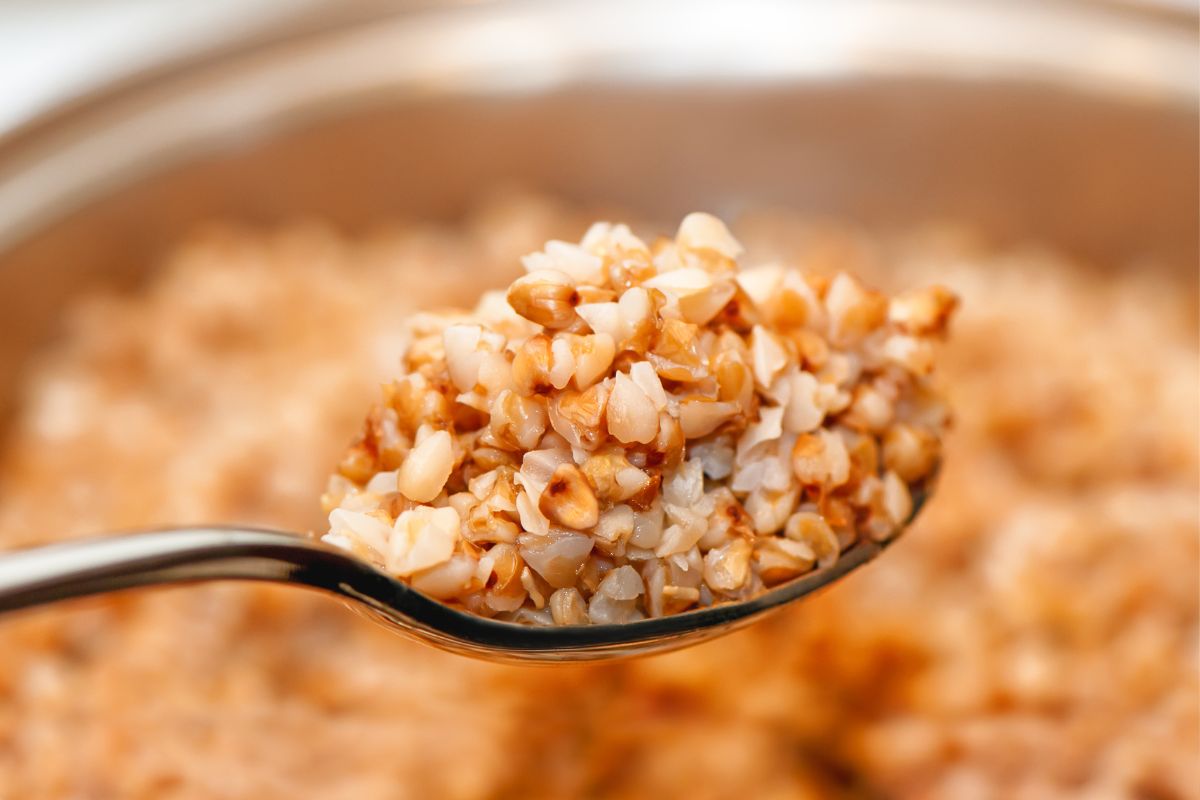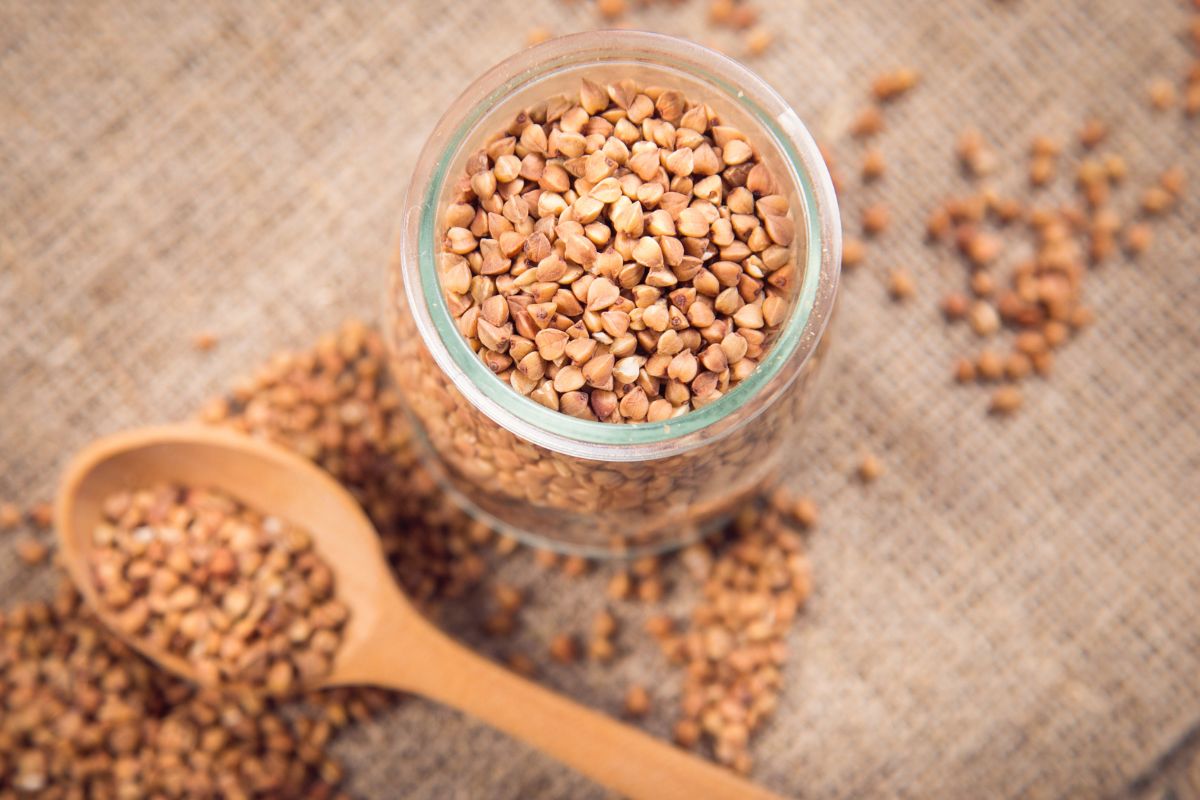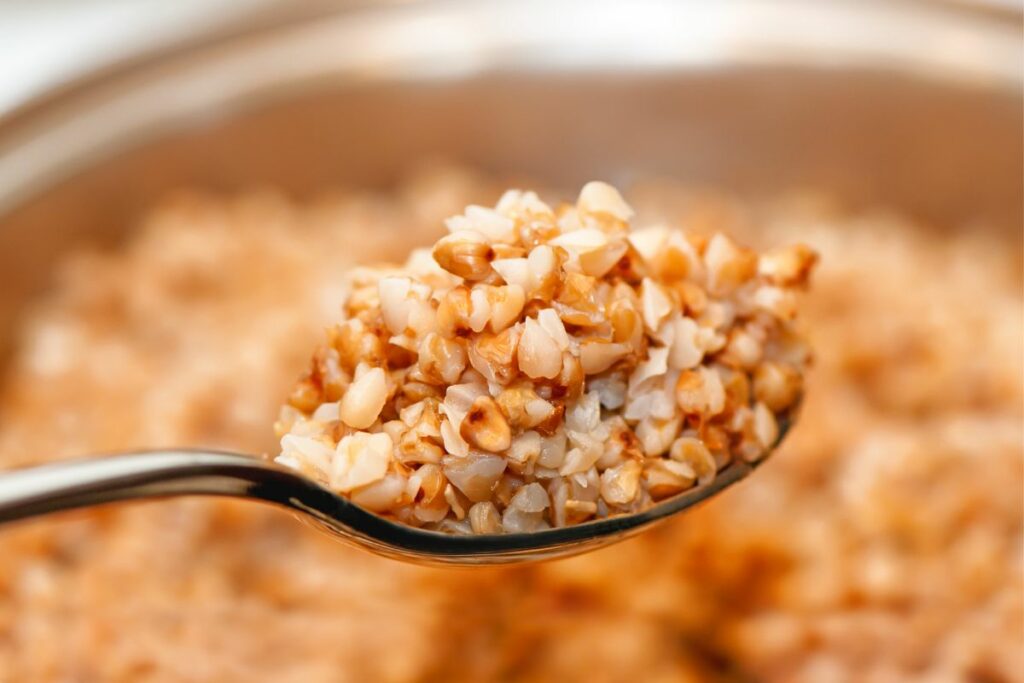Buckwheat has been eaten by people around the world for thousands of years.
This ancient grain was a common crop until the 20th century when the production of wheat and corn took over.

However, buckwheat is still produced today, just in smaller quantities. And you can find it in some popular recipes as replacement for rice or couscous.
But what does buckwheat really taste like? And how do you cook it the right way to get all the nutrients from this delicious grain?
Read on to find the answers to these questions.
What Is Buckwheat?
Before we take a closer look at what it tastes like, let’s start with what buckwheat is.
The name does seem to cause quite a bit of confusion as buckwheat is not related to wheat in any way.
Buckwheat is considered a so-called “pseudocereal” which means it belongs to a category of seeds that come from non-grass plants. They are similar to quinoa and amaranth which are both also pseudocereals.
Also called common buckwheat, this cultivated plant has seeds that are similar to grains, and they can be harvested.
As buckwheat doesn’t contain any wheat, it is ideal for a gluten-free diet and a perfect replacement for wheat berries, spelt and bulgur (Find out Is Bulgur Gluten-Free? here).
What Does Buckwheat Taste Like?
While buckwheat is not part of the wheat family, it does taste similar to wheat. Its taste is relatively mild, grainy and a little nutty.
When you try to toast buckwheat, then you can extract some more of the nuttiness from the buckwheat groats.
You will also taste an interesting hoppy element which makes the grain flavor a little bitter but not overpowering.
What Is Buckwheat Similar To?
Buckwheat has a similar flavor to oat, brown rice, flour and quinoa. You can use buckwheat as an alternative for all of these in any recipe.
Thanks to the similar taste, you won’t notice any difference.
The Texture Of Buckwheat
It’s not all about the taste but also the right texture when you want to add buckwheat to a dish.
Cooked buckwheat has a similar texture to that of couscous. It is chewy and soft but not mushy.
This relatively firm consistency makes buckwheat ideal for warm and cold salads, like egg salads or pasta salads.
If you want to give buckwheat more of a chewy texture, then you just need to soak it for a while. However, soaked buckwheat will also taste more starchy.
Can You Eat Raw Buckwheat?
We wouldn’t recommend eating fully raw buckwheat groats. They will be hard and indigestible.
If you want to keep your buckwheat uncooked, then just soak the groats overnight. This will make them softer, edible and easier on your digestive system.

Alternatively, you can also toast buckwheat groats. The heat will break the grain down a little, and you can then sprinkle it onto your meal.
How To Cook Buckwheat
Here are a few different ways how you can prepare and cook buckwheat for a delicious dinner.
Soak The Buckwheat Before Cooking
To make buckwheat grains softer, it’s a good idea to soak them overnight before you cook them.
This will break down the phytic acid inside the grain, and it will also help your digestive system absorb the nutrients much better.
Cooking Buckwheat
The best way of cooking buckwheat is with a 1:2 ratio of water. Bring the water to the boil and then add the buckwheat.
You can also add salt at this stage. Let everything come to the boil and then cover the pot with a lid. Allow the buckwheat to simmer for at least 15 minutes.
Then check if the groats are tender and soft. If you plan to add the buckwheat to a salad, just drain the whole lot, and gently mix it in with the salad using a spoon..
Buckwheat Flour
You can also grind your buckwheat into flour which can be used for buckwheat pancakes, crêpes, noodles and other gluten-free treats.
Buckwheat flour is traditionally used for making Japanese soba noodles, although this may be different with packaged soba noodles today.
Buckwheat As Binding Agent
When you soak buckwheat for a long time, then it will become gelatinous, which makes it an ideal binding agent for baking.
How Long Does Cooked Buckwheat Keep?
You can easily keep cooked buckwheat in the fridge for up to four days. Make sure that you store it in an airtight container.
Similar to couscous and rice, this ability to store it makes buckwheat ideal for cooking larger batches.
Alternatively, you can also freeze buckwheat. Again, put it into an airtight container and pop it in the freezer for up to three months.
It’s also a good idea to portion it before freezing, so you only take out anything you need at the time.
How Do You Eat Buckwheat?
You can eat buckwheat in so many different ways that we couldn’t possibly mention everything here, but it’s a good idea to start with some basic recipes.
We particularly like buckwheat pancakes. They are usually very quick and easy to make, and you can then work your way up to more complex desserts and dinner dishes.
Don’t forget that you can also grind buckwheat into flour which can be used for cakes, biscuits and other tasty treats.
Our favorite buckwheat dish (besides the pancakes) are gluten-free buckwheat crêpes. Simply use buckwheat flour as a replacement for your normal crêpes recipe.
You can top these crêpes with caramel or chocolate sauce, and fill them with fresh fruit.
If you prefer savory options, then buckwheat can be used in a vegan risotto with onions, leeks, celery and plenty of other greens.
Final Thoughts
Although buckwheat is not often used in recipes, compared to oats and wheat, it is still a great gluten-free option for main meals and desserts.
From nutty pancakes to flavorful pasta salads, almost any recipe that uses quinoa, wheat and some other similar grains can also contain buckwheat.
Just try buckwheat in a few of your favorite dishes, and you’ll wonder how you could ever cook without it.








